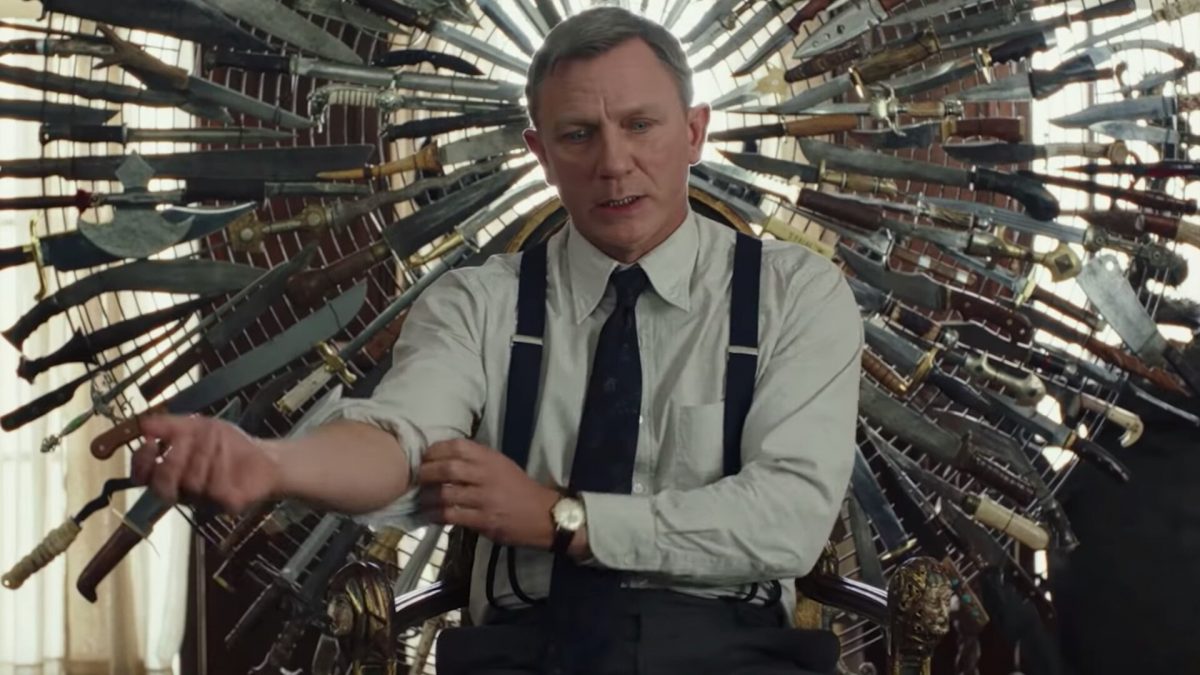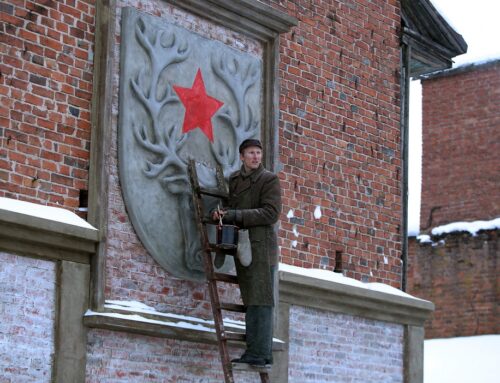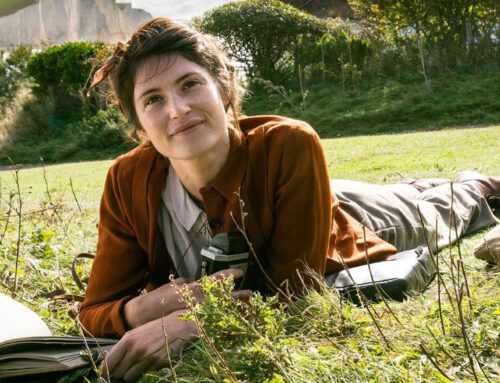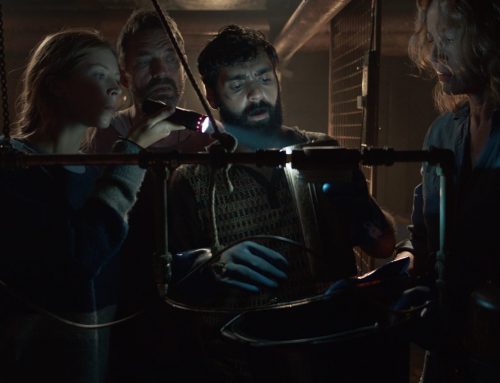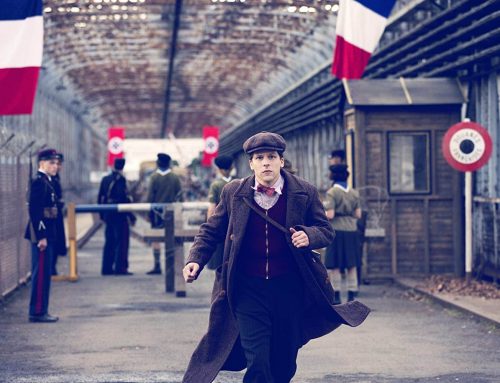Mystery-comedies don’t get made very much, nor do flicks that would have Agatha Christie queuing up.
Celebrated crime writer and patriarch Harlan Thrombey, on the night of his 85th birthday, is found dead in his reclusive attic. Atop a winding, creaky staircase, it could only have been one of his smorgasbord of family in town for the festivities, played by Jamie Lee Curtis, Chris Evans, Toni Collette, Michael Shannon, Don Johnson, Katherine Langford and Jaeden Martell amid a sprawling cast including Ana de Armas, depicting Harlan’s nurse, and Daniel Craig as ‘Inspector’ Benoit Blanc.
Frank Oz has a small role, and if not for Armas and Plummer he would be best in show. More on that later.
From a description a viewer might rightly glean that this crime-drama bears strong shades of comedy. The peculiar brilliance of Knives Out, among much that so recommends this, is that Director/Writer Rian Johnson coyly masks selections of the asides and clues necessary to the mystery in comedy that nay resembles herrings. There being great comedy to boot, regular references to the liberal-elite Thrombey clan professing to care for Armas’ Marta while members routinely allude to her being from Ecuador or Brazil or else (Armas is Cuban, one nation not mentioned) are but examples of the sardonic and moreover very contemporaneous socio-political commentary Johnson unleashes via the family that have long leached off Harlan’s success.
This is not however a simple case of Harlan’s three offspring and the widow of his deceased child running amok with the kitty even if Evans’ Ransom is largely painted with these broad strokes (post-Marvel he’s really having a ball playing a less than wholesome figure); for each of those four concerned share a particular, distinct relationship with the Hammett of his day. With what we come to learn of his thoughts on his family quickly foreshadowing all the manor’s occupants as suspects, the nuance applied to each of Harlan’s repartees with the next generation imbues the mystery’s procession and indeed resolve with degrees of complexity both as regards the scheme and that duly emotive.
Bearing uncommonly tight plotting for a tale so dense, ardent mystery fans will find themselves uncovering holes throughout which shrewdly address themselves and, if identified early enough, emerge hitherto as clues. While some characters’ movements wouldn’t be the go-to for many there is no action that transpires in the course of events which breaches the bounds of plausibility; the later labyrinthine storytelling being a joy to unpack for die-hards.
Commencing with a fairly traditional first act none too far beyond remarkable, we are here introduced to Blanc. It’s nice to see Craig having fun, and working in now the first of two features alongside No Time To Die co-star Armas, yet his Kentucky accent is unnecessary and abundantly distracting. There’s no reason, moreover for the very European name, that Craig couldn’t have deployed that more akin to his natural tones and necessarily emphatic. Quite barbs he trades late in the second act with a suspect amidst a ‘Purloined Letter’ instance are his stand-out contribution.
As good as the scripting is, the Direction, while servicing the story, isn’t especially memorable compared to any of Johnson’s previous work. Much more comfortable in the interior settings (the tableaus of characters in the parlour are especially nice touches), several exterior shots bear backgrounds or foregrounds softly out of focus and distractedly so while one sunroom sequence, an interior setting amidst largely external surroundings, does not impart the naturalistic environment so inherent to and characteristic of the many scenes which occur outside the manor.
It is following this first act however where things get just brilliant. It is not possible to discuss the full implications of the admirable end of first, second and third act twists without going into spoilers and this author won’t be doing so. Suffice to say, at the first of these there is a unique exchange between Harlan and one other central figure told through the latter’s recollection. Amidst this encounter it becomes apparent that Plummer is playing one of the most interesting characters brought to life on the big screen this year with Johnson marvellously utilising the star’s talent and charm. In the broadest of terms, when aspects of a criminal act are unpacked for a character’s benefit as our own, the maniacal shrewdness and malevolence which would typically befit such an event are respectively overshadowed and replaced by (together with a very endearing mischievousness) an overwhelming sense of kindness rarely seen in like narratives.
At the heart of this story is more than one character it at least appears at the outset are genuinely wonderful human beings and it is their presence and relationship, as warmly brought to life by two excellent performers, which not only grounds this narrative but renders it aboundingly moving. The distinct circumstances and indeed charm of the conniving at this junction, harnessing the narrative’s intended self-referentialism and comedy in a manner atypical of crime thrillers, will too be an especial joy for stalwarts.
It is likewise at this stage that the roles of the ‘Watson’ figure, suspect(s) and the very necessary function of they who bring in the private detective are all wonderfully inverted and uniquely so. This author having made a habit of reading dozens followed by hundreds of such fictions and so consumed Poirot and Marple et al cannot identify a narrative where something akin to this transposition has taken place nor one where the victim played such a function as here. Those most dedicated crime fans may know one yet and if that is the case it will still be a special pleasure to see this particular story rendered so well.
Too enveloping itself with multiple mysteries (together with matters one may not readily glean they are solving) while fielding both a traditional crime narrative from the detective’s perspective alongside the more modern storytelling advent utilising a prime suspect’s point of view, the conflations and indeed their upending are of a rare quality. Boasting the esteemed mark of a character literally professing a denouement (more than once) yet never in such a manner that undermines or forgoes the suspense and further resolution, in these regard Knives Out’s creators can similarly be proud.
Finally; Armas. An underrated performer who has exhibited diverse talent in each of her chosen roles has, tasked with a most complex character, turned in to date her best performance. Previously saddled with multifaceted roles in films which too sought to place a not insignificant emphasis on her characters’ objectification, given such time to shine Armas’ turn rises high among a set of figures vividly brought to life by a series of excellent performers any of whom could carry most movies all on their own. Assembled here, they, and Knives Out, are a delight.
Knives Out is in cinemas from November 28 and screens as part of Sunset Cinema Canberra on November 23, December 29 and January 10, 2020, Melbourne Openair Cinema on November 26, Sydney Openair Cinemas on November 27, Moonlight Cinema in Sydney, Adelaide, Melbourne, Brisbane and Perth on December 26 and January 19, 2020, Sunset Cinema Wollongong on December 27 and January 9, 2020, Mov’ In Bed in Melbourne on January 10 and February 27, 2020, Mov’ In Bed in Sydney on January 23, February 28, March 17, 2020 and May 31, 2020 and Mov’ In Bed in Brisbane on April 2 and April 19, 2020, Sunset Cinema North Sydney on January 17 and January 29, 2020 and Canberra Openair Cinema and Westpac OpenAir Cinema on January 31, 2020
on FalkenScreen


